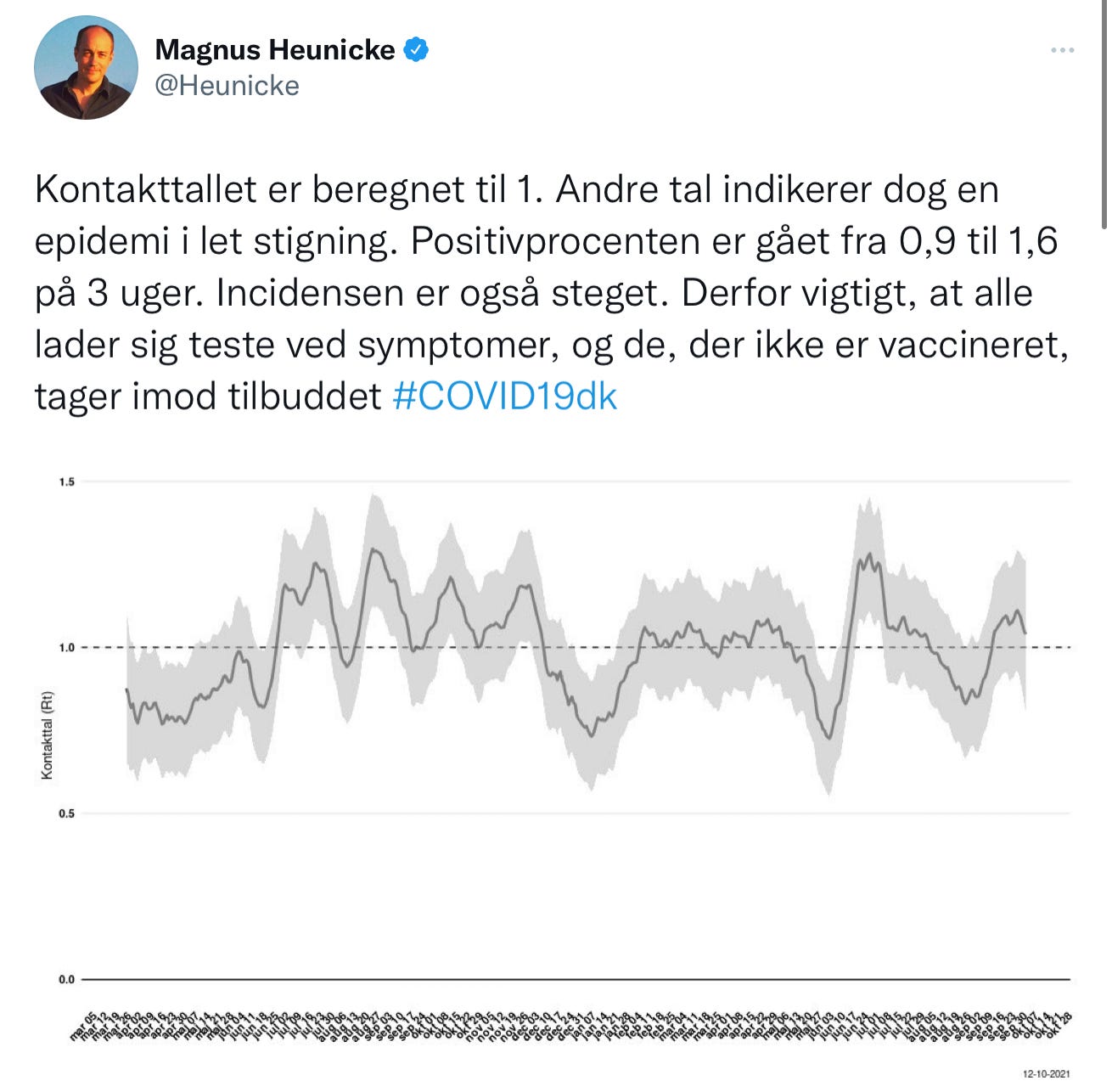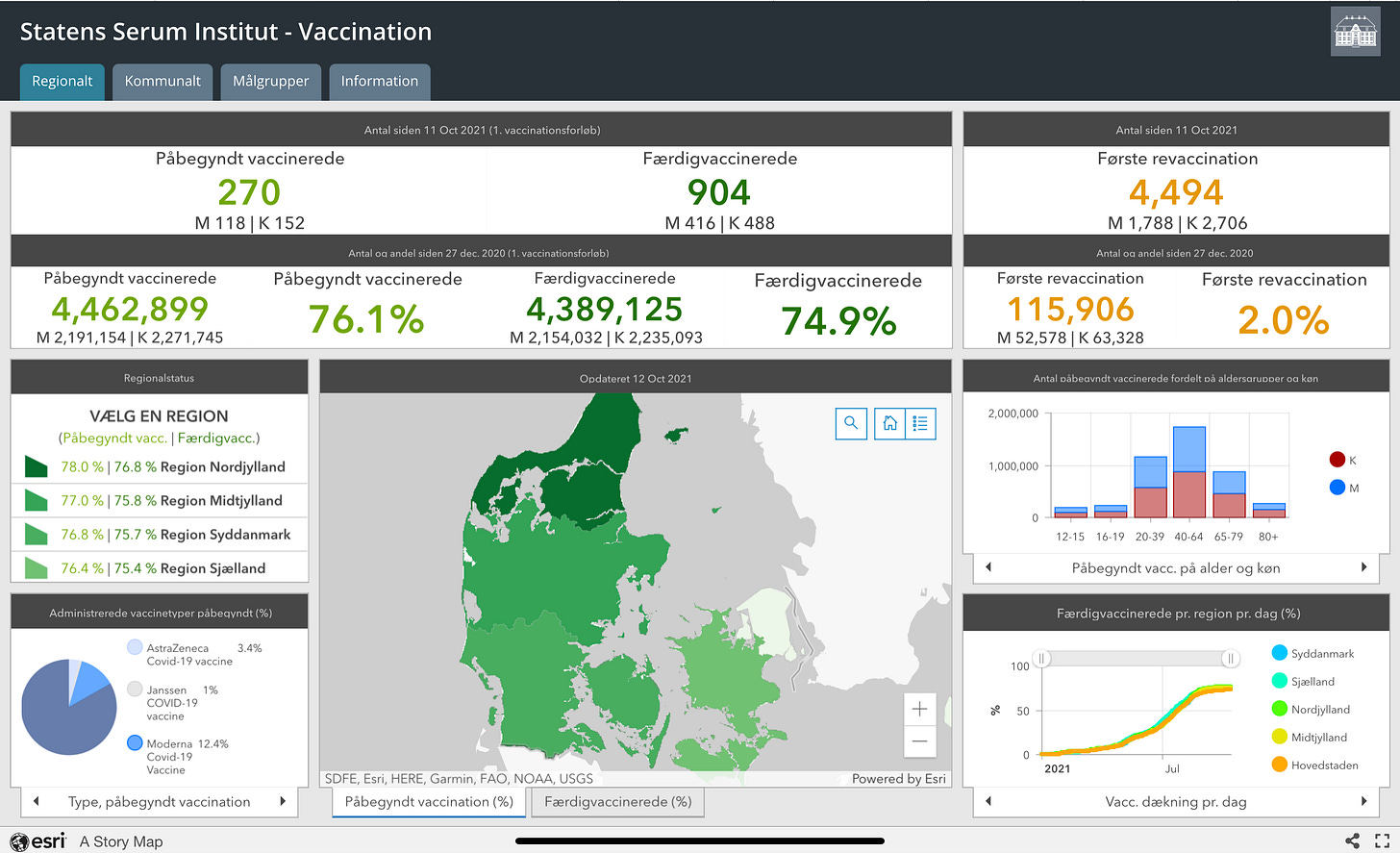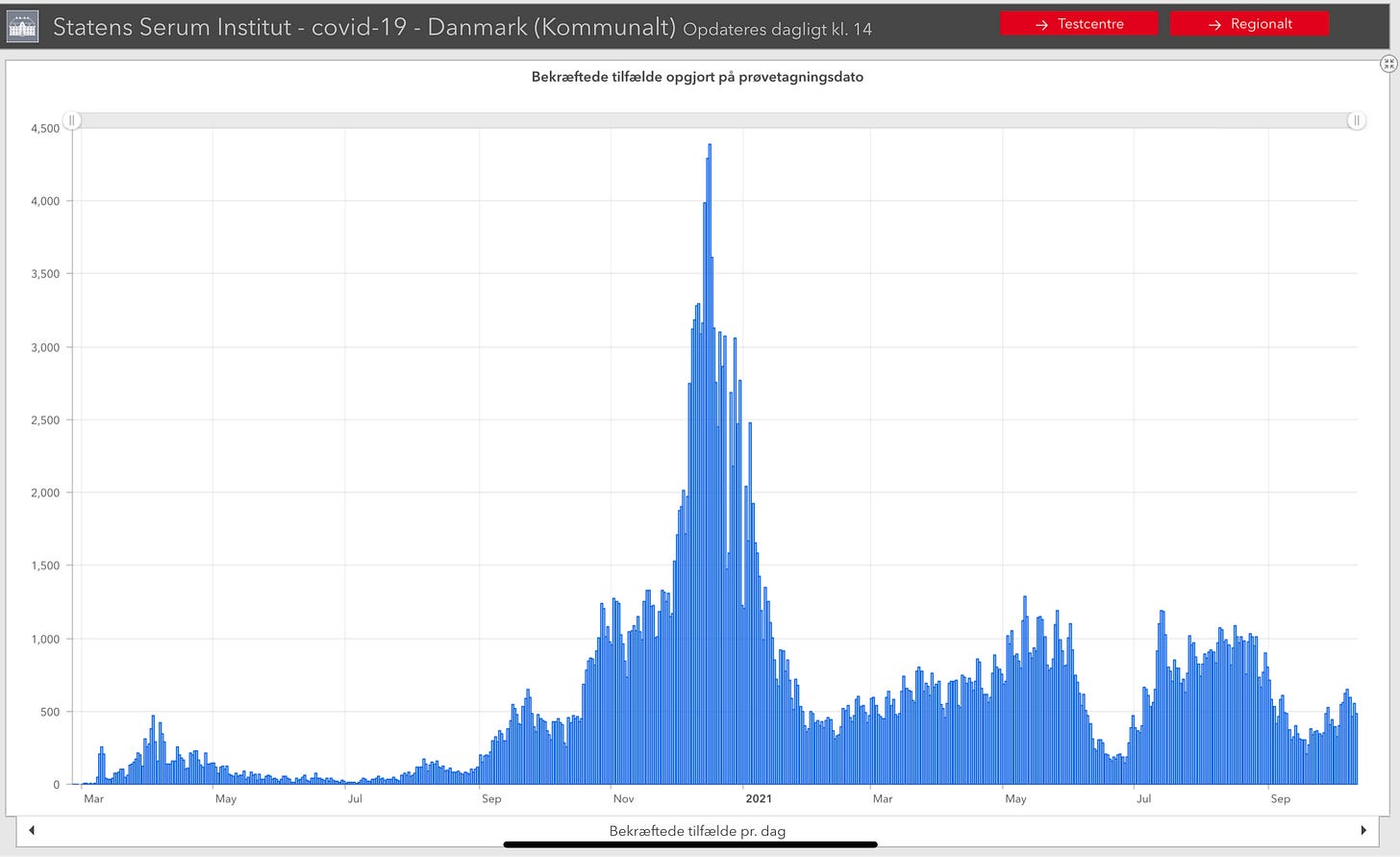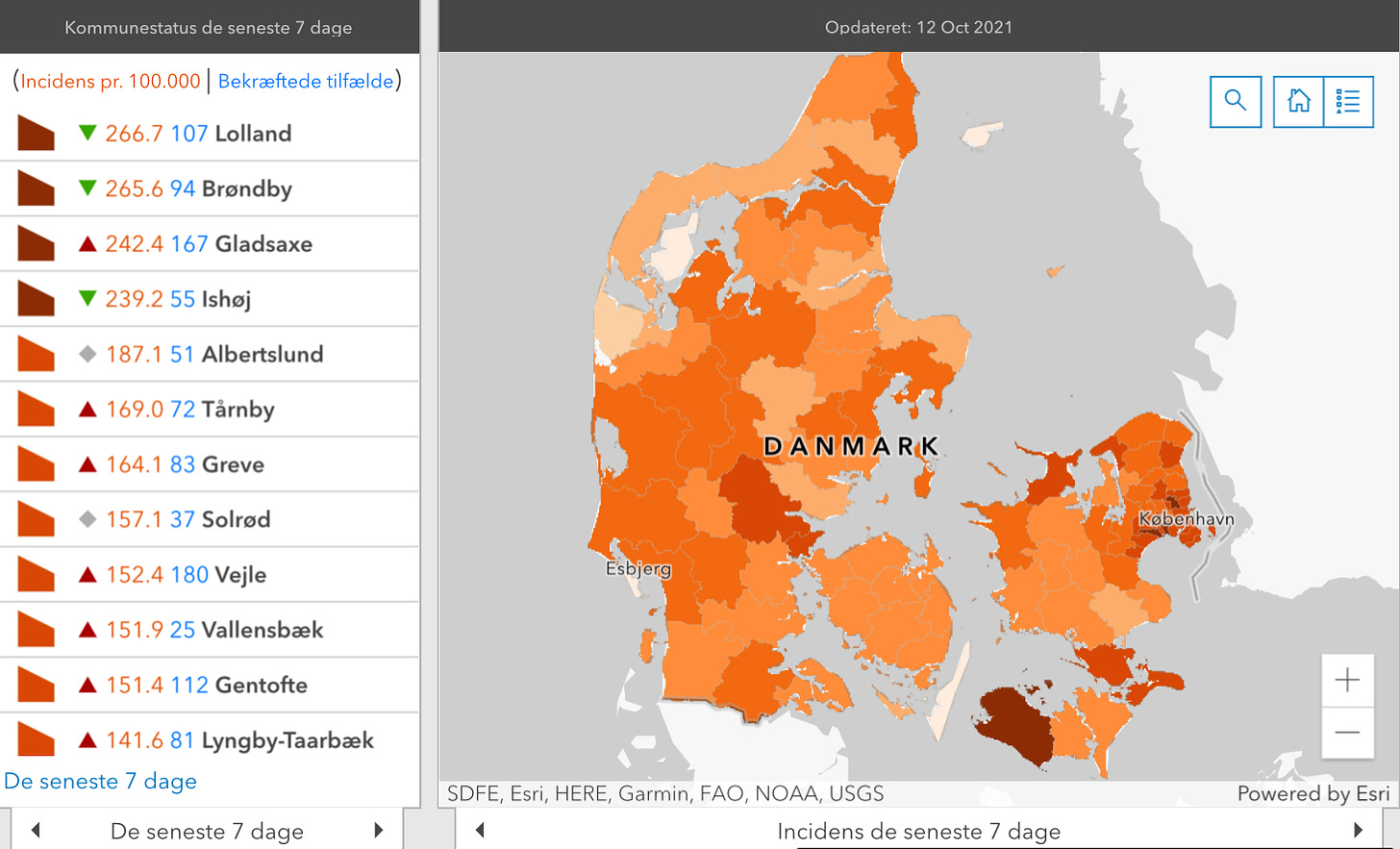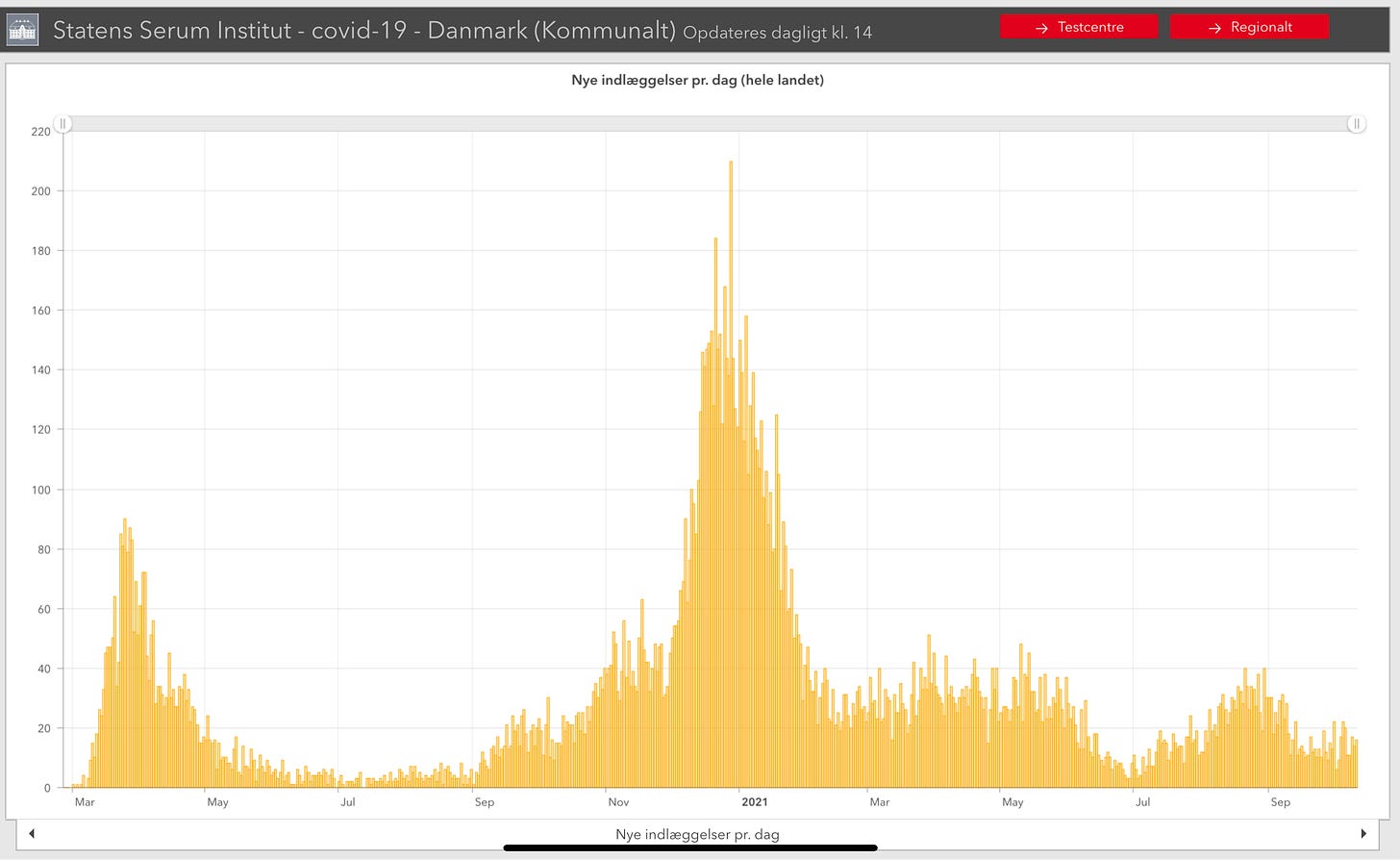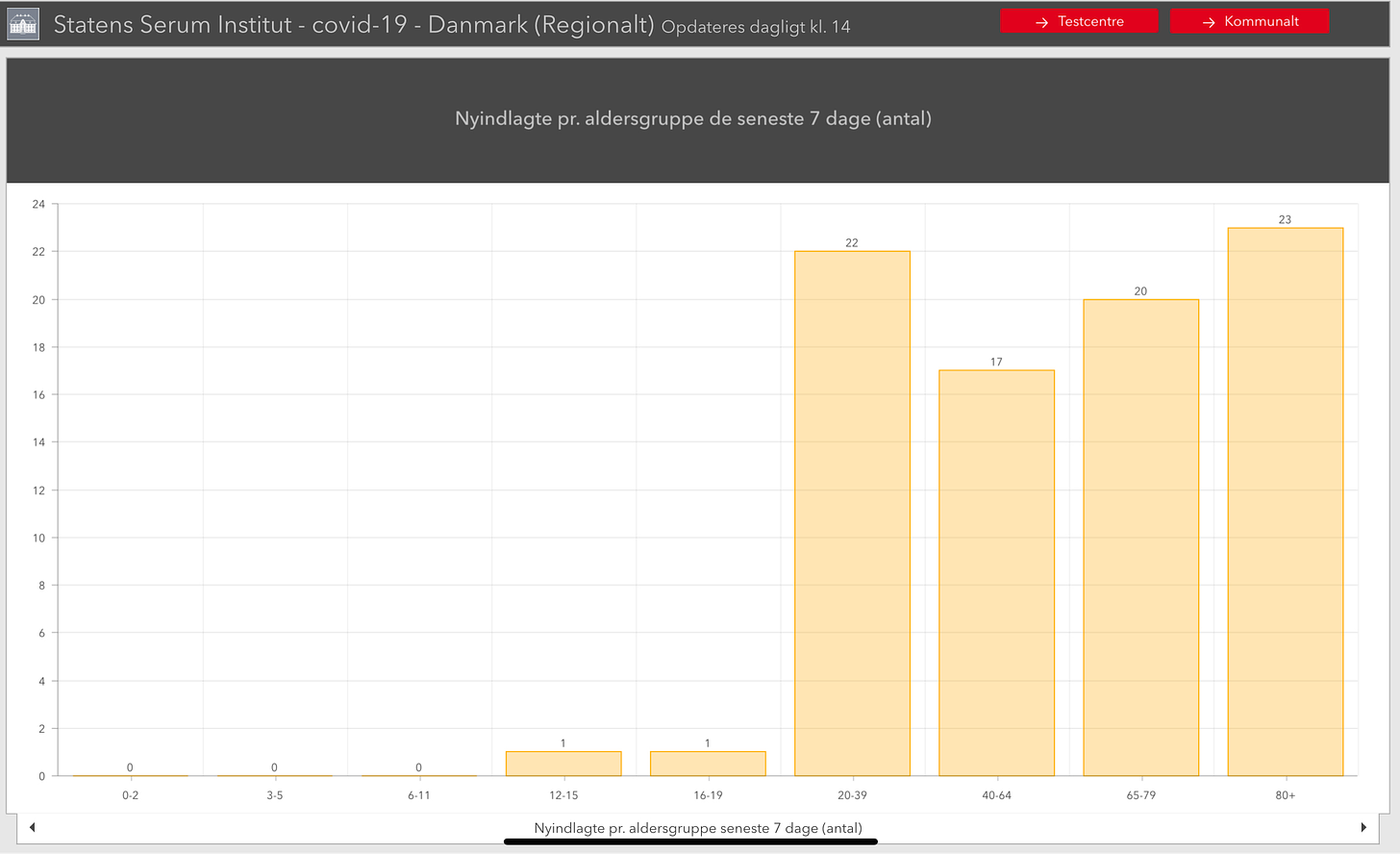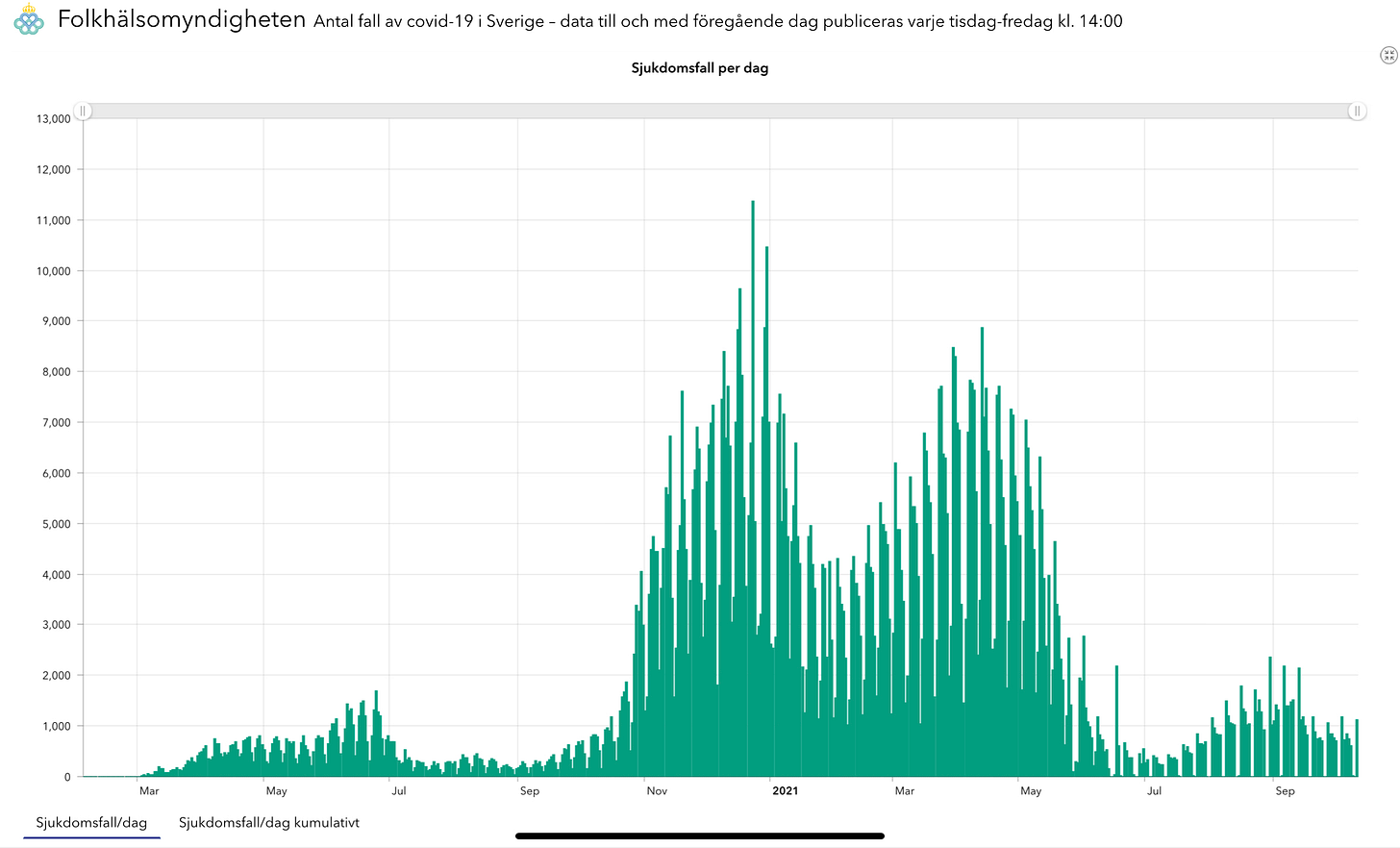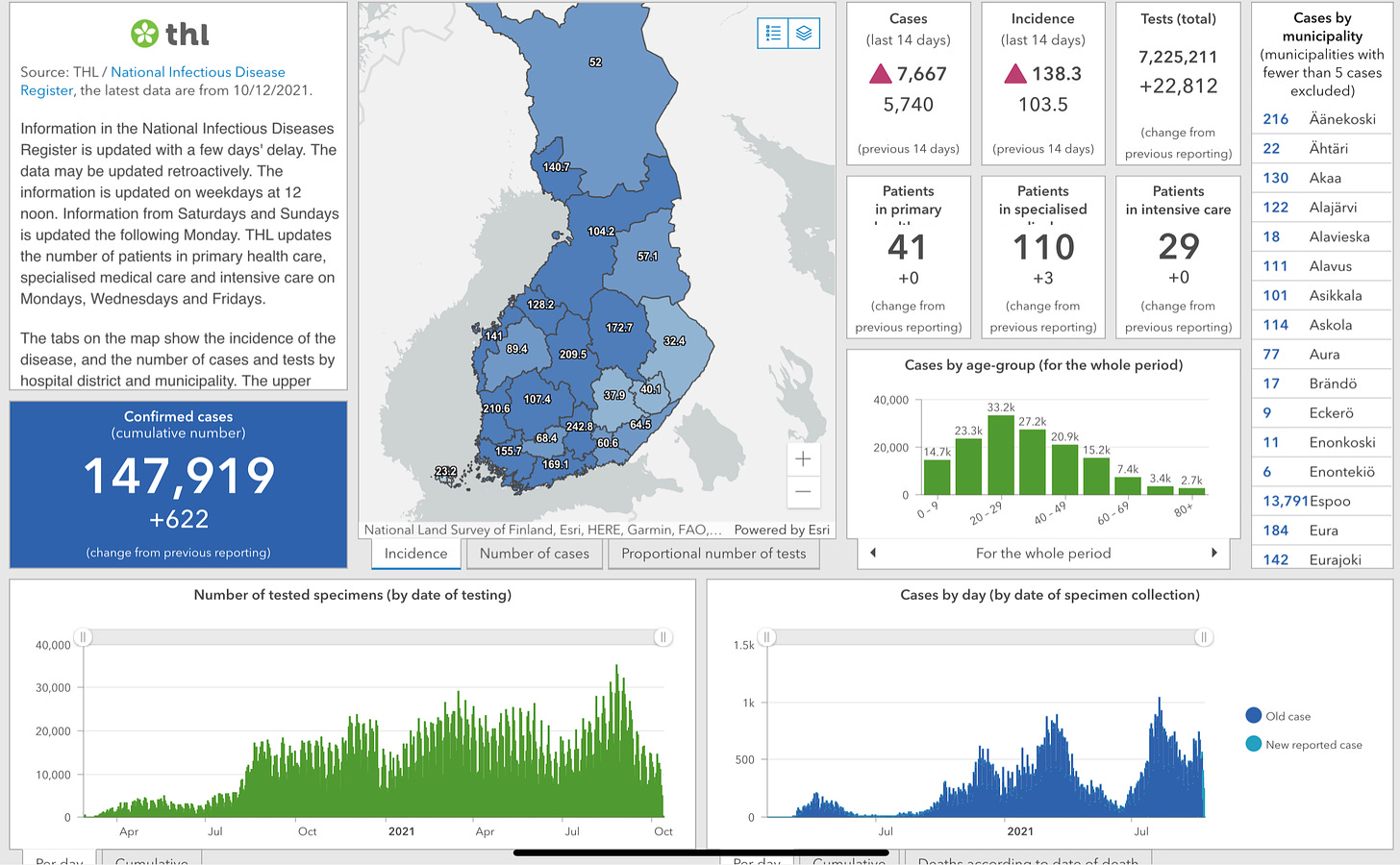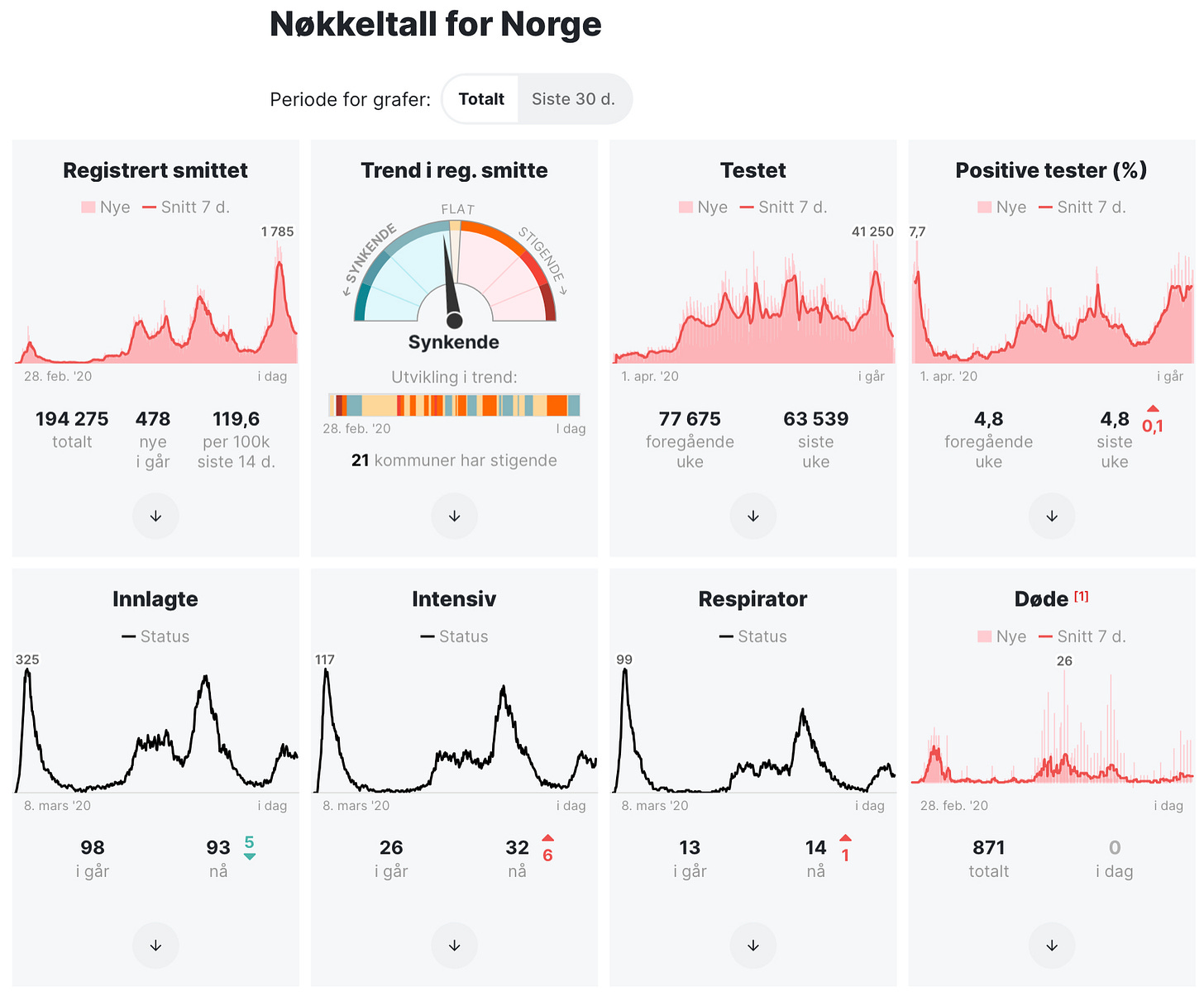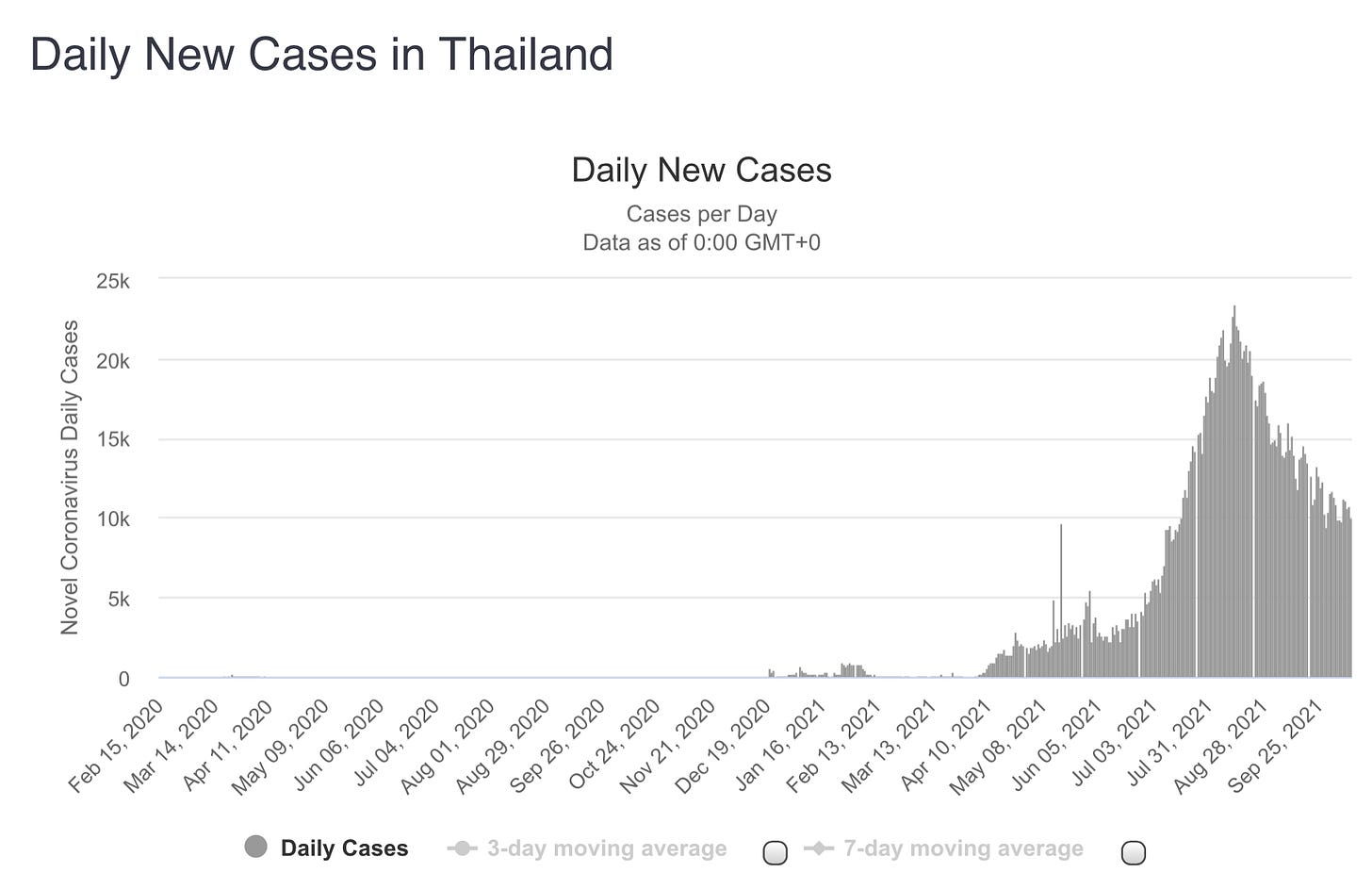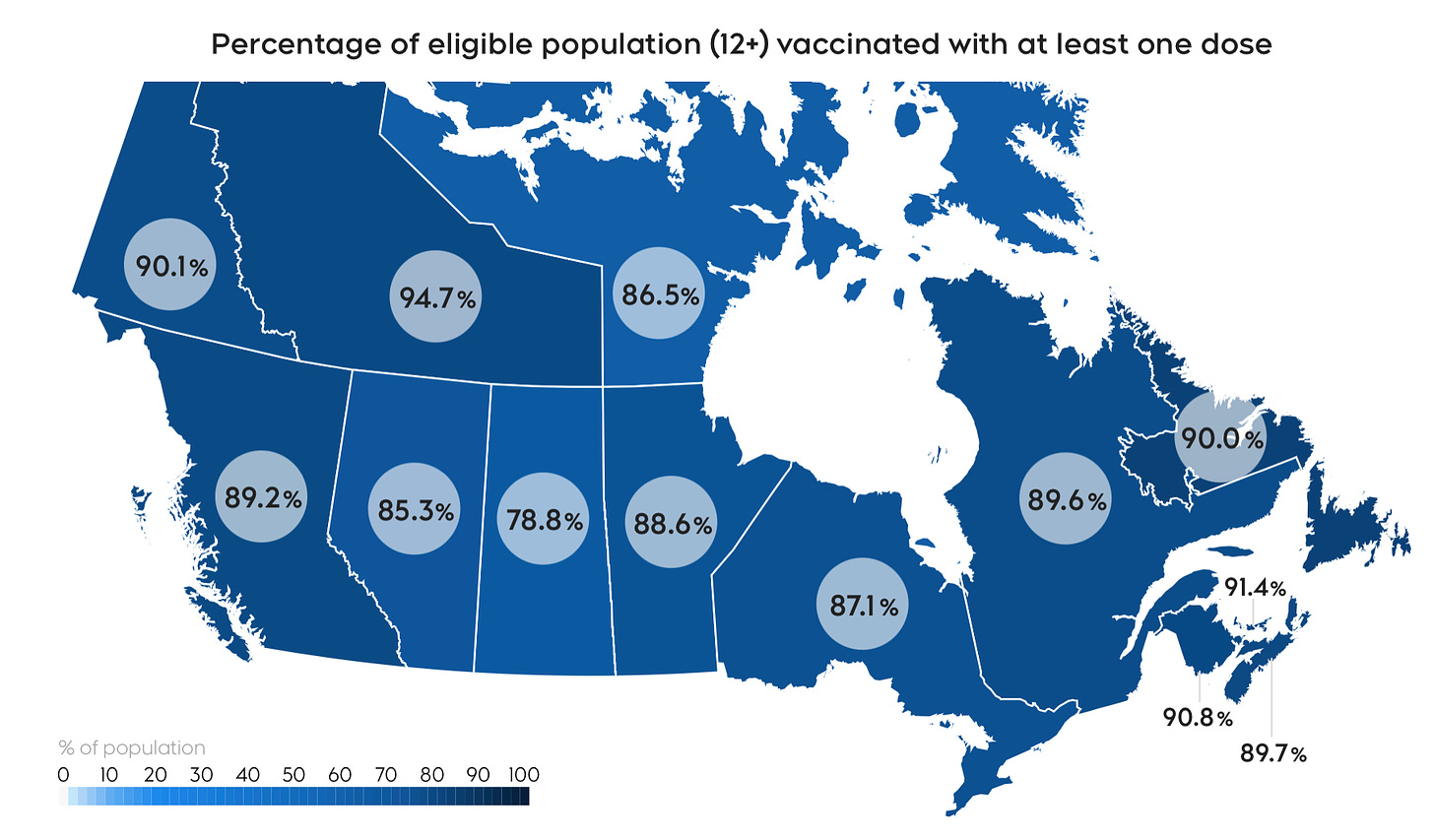🇩🇰
As Denmark prepares to lift virtually all remaining COVID entry and border restrictions this weekend, the move is being welcomed by the country’s largest business group. Dansk Industri says it is celebrating the decision and a return to more normal travel.
Director Michael Svane says it is crucial to begin to breathe new life into the travel, tourism, hospitality, and restaurant sectors after they took a financial beating during the pandemic.
“We are very pleased that a major step is now being taken towards normalizing travel opportunities to and from Denmark. This means that companies can safely send employees out to markets and customers all over the world. It means a lot to returning to everyday life in companies across all industries. The wishes of the profession have been listened to and the result is a good example of excellent cooperation between authorities and the profession, including when it comes to travelers from third countries, where fully vaccinated people can now enter freely.”
That said, the industry group does note a “worrying picture” in some countries battling COVID infection waves. It is asking the government to keep reassessing the travel situation at regular intervals, ideally with the next reevaluation coming early in the new year.
For the details of the significant easing of all remaining COVID entry and border restrictions in Denmark coming this weekend, you can read our story HERE.
-
Danish Health Minister Magnus Heunicke said today that the COVID contact number (reinfection rate or R0) remains at 1.0 for a second week in a row. However, he cautioned that “other figures” are indicating an increasing epidemic. Among those warning indicators is a surging positivity percentage that has gone from 0.9% to 1.6% in just three weeks. The minister also notes the increasing COVID incidence rate.
“Therefore, it is important that everyone gets tested for symptoms, and those who have not been vaccinated accept the vaccination offer.”
-
COVID vaccinations have slowed to a crawl with just 5,668 total inoculations yesterday. Of those, a mere 270 were 1st doses and 904 were second shots.
76.1% of the total population has one vaccine dose and 74.9% have both doses.
On the booster shot front, 115,906 3rd doses (2% of the population) have been administered so far.
-
Denmark is reporting 587 COVID infections and three more coronavirus deaths in the last day.
There were 62,317 total corona tests done yesterday. 41,729 of them were PCR tests, which equals a positivity percentage of 1.40%.
-
The number of Danish kommunes with a COVID incidence rate above 100 per 100,000 residents has increased to 23. Of those, four municipalities have an incidence rate above 200.
-
COVID hospitalizations (89) and the number of infected people in an ICU (17) both remain unchanged day to day. Of those in an ICU on a ventilator (11) numbers dipped slightly (-1).
In the last seven days, all but two COVID hospitalizations were among people aged 20 years old and older. In yesterday’s Informeret we covered infections over the previous week with an eye-catching 956 among children aged six to 11 years old. We now know there wasn’t a single hospitalization among that group.
The Staten Serum Institut has done some housekeeping on its COVID statistics and has reduced the total number of people counted as COVID patients in an ICU by 179. The total number of to date ICU admissions in the pandemic is now 1,743. The slight correction does not impact current hospitalization or ICU numbers, which are both above.
-
Denmark’s housing market is shaking off the pandemic impact as the number of sales returns to something more normal. In September, house and apartment sales across the country rose 0.3% month over month. That is back in line with the average over the last ten years after the COVID pandemic put a damper on sales activity. Mira Lie Nielsen, a housing economist at Nykredit, told Ritzau that with no more restrictions people are once again getting back in the market and looking for opportunities.
🇸🇪
Sweden has added 1,738 infections and 15 more corona deaths since its last update on Friday.
So far, 7,197,950 1st vaccine doses (84.3% of the population aged 16 years old and older) and 6,752,103 2nd doses (79.1%) have been administered.
-
The Swedish Public Health Agency says most healthcare workers are now vaccinated, but some holdouts still remain. For those who are unvaccinated, it is putting in guidelines, which include hand-washing, wearing protective equipment, and a requirement to keep social distance from seniors and any others considered high-risk.
To date, 86% of all Swedish healthcare workers have at least one dose and 81% are fully vaccinated. Among staff at emergency hospitals vaccination coverage is at more than 90%.
Some regions, like Stockholm, also mandate being vaccinated for certain healthcare staff, especially those in close contact with infection cases. For those who are not vaccinated, they are moved to lower risk areas and tasks.
-
In Region Stockholm COVID infections and hospitalizations are slowly easing. However, the welcome news is being offset by an arriving RS virus infection wave.
Chief Physician Johan Bratt:
“In recent weeks, there has been a rapid increase in children being admitted who are sick with the RS virus at our two children's hospitals. This means that the situation is very strained in pediatric care in the region.”
Bratt says the two different infection waves are problematic and are putting the health system under strain. His hope is that steady declines in the COVID situation will continue.
“We note a reduction in the number of people infected with COVID in our hospitals. This is a sign that the vaccines are working. We have more and more vaccinated people, which contributes both to fewer people being infected and fewer people needing hospital care. It may be a temporary relief, but we obviously hope that the reduction continues.”
Currently, there are 76 COVID patients in the region, 25 fewer than there were last week. Infections are also easing, with 1,298 coronavirus cases last week, down from the 1,322 the week before.
The Swedish capital region has a positivity percentage of 5.5%.
-
Mixed news from Southern Sweden. Region Skåne says the number of infection cases continues to decline. Last week there were 340 coronavirus infections, a 16.7% drop from the week before and the lowest number in the region since mid-July.
However, Infection Control Doctor Eva Melander notes the rate of decline has slowed.
“Most infection cases are among those 10 to 19 years old and the increase in this group is greatest in those between 10 and 14 years old. Unfortunately, we also have a small increase in cases among those older than 60. But this is a small number of people because in total there are few infected among the elderly.”
Another concern is infection spread within healthcare facilities.
“In investigations into positive cases in municipal healthcare facilities in recent weeks, it has been shown that the infection, unfortunately in several cases, it spread to both residents and staff.”
The region says this underscores how important it is that healthcare staff not let their guard down and continue to follow all recommendations and safety practices.
-
Sweden is preparing for a massive flu shot campaign set to begin in early November. Health authorities are already working to get information to everyone in the target group along with information campaigns set to roll out online and on social media.
The priority groups for the influenza vaccine in Sweden are seniors 65 years old and older, pregnant women, healthcare staff, and other high-risk groups.
For seniors who are 80 years old and older, the Swedish Public Health Agency will offer both a flu shot and a COVID vaccine booster dose at the same time. Invitations for this group are already being sent out.
🇫🇮
Finland has registered 622 infections in the last day.
To date, 4,163,606 1st vaccine doses (74.3% of the total population) have been administered and 3,625,083 people (64.9%) are fully vaccinated.
-
Better late than never. Finland’s COVID passport was unveiled at a press conference on Tuesday. The passport must still be approved in a parliamentary vote, which will likely take place this week. If it passes, the vaccine passport could come into force as early as this weekend.
-
The Finnish Institute of Health has taken a look at the economic impact and recovery from the COVID pandemic. It found that employment for women fell more than men’s. It notes this is not unique to Finland as it has also been a trend in North America. Financially, those 59 years old and older fared the best during the pandemic, while young people suffered the most, with summer jobs being wiped out and overall youth employment falling. The crunch on young people also had a ripple impact on their families.
For businesses, the health agency found smaller operations with fewer than 50 employees seem to have survived relatively unscathed. While bigger companies have taken a bigger hit.
The institute says while the overall economic recovery from the COVID crisis in Finland has been very rapid at the macro level, there are some worrying signs. It says poverty among families, especially those with children, is “in danger of growing.”
🇳🇴
Norway has added 541 infections and had no new virus deaths in the last 24 hours.
COVID hospitalizations (93) are down (-5) while ICU numbers (32) are up (+6) of those on a ventilator (14) the number inched upward (+1).
So far, 77.62% of Norwegians 12 years old and older have had one vaccine dose and 68.50% have had both.
🇪🇺💉
It is the end of the road for a once-promising COVID vaccine candidate. On Tuesday, CureVac informed the European Medicines Agency it is withdrawing its vaccine from the review process. The EMA had been conducting a rolling review of the vaccine since February.
Per the release announcing the news from Europe’s pharmaceutical watchdog:
“Although EMA was speeding up its review of the data, some questions about the vaccine’s quality, impacting the benefit-risk balance of the vaccine, and the fact that results of the main study showed only a modest vaccine efficacy in adults still remained to be satisfactorily addressed.”
In a letter to the EMA, the company said it was pulling its CureVac vaccine “to focus its COVID vaccine development on a second-generation vaccine program.”
CureVac had been battling disappointing efficacy results from clinical trials showing the vaccine was far less effective against COVID than any vaccine approved to date.
🇺🇸
As the United States prepares to open its borders to all travelers who have had two COVID vaccine doses, it is broadening its definition of who is considered to be fully vaccinated. The U.S. Center for Disease Control has broadened its list of approved COVID vaccines to include any approved for emergency use by the World Health Organization or the U.S. Food and Drug Administration.
This is good news for people who have two doses of AstraZeneca, a vaccine not approved for use in the United States, who until now were not recognized as being fully vaccinated by American border officials.
However, another problem continues to loom. That is whether the U.S. will allow people in who are cross-vaccinated, two doses of two different vaccines. There are almost four-million Canadians alone who have mixed vaccinations, not to mention all those in Europe and elsewhere.
The CDC is not yet saying how it will deal with the issue, only that details will be finalized closer to the day the American borders open to fully vaccinated travelers.
🇹🇭
Thailand is preparing to open to fully vaccinated tourists from certain designated countries as of November 1. The country will remove all quarantine requirements for fully vaccinated travelers from ten countries it deems as low-risk. While the full list won’t be out until the end of the month reports suggest that China, the United States, Germany, and the UK will all be included.
Thailand is suffering its biggest economic downturn in at least two decades as it battles its way out of its biggest COVID infection wave of the pandemic. The sudden onslaught of coronavirus cases has sideswiped the country’s tourism industry.
On Tuesday Thailand reported 9,445 new COVID cases and another 84 deaths.
🇨🇦
Public Health Canada has still not updated its COVID dashboard since October 8 due to the Thanksgiving long weekend.
-
On the vaccination front to date, 29,357,118 1st doses (76.78% of the total population have been administered while 27,479,437 people (71.87%) are fully vaccinated.
Over the last two days, Ontario has seen 848 infections, with 593 of those being among people who are either not vaccinated or who have just a single dose. There are 155 people in hospital and 149 in an ICU.
Quebec reported 409 coronavirus cases today and another two deaths. The province is three days away from a Friday deadline where healthcare workers must be vaccinated. Those who are not will be suspended without pay.
For the fourth time ever in the pandemic and the fourth time in the last two weeks, New Brunswick has reported more than 100 new infections.
Newfoundland and Labrador had 21 infections and two deaths.
Nova Scotia saw 99 new infections over the long weekend.
Manitoba has registered 349 new COVID cases and seven more deaths over the last four days, as it reports, for the first time since before the Thanksgiving long weekend.
There were 272 new infections in Saskatchewan today, the province’s lowest daily number of cases in a week.
Alberta has logged 3,358 infections and 33 deaths over the Thanksgiving weekend. Tragically, a 14-year-old was among the lives lost according to Alberta’s Chief Medical Health Officer, Dr. Deena Hinshaw.
There are 1,053 people in hospitals in Alberta and 242 of them are in an ICU. Of those in intensive care, 90% are unvaccinated. Alberta currently has a positivity percentage of 8.3%.
B.C. recorded 2,029 infections and 28 more deaths over the holiday weekend. There are 347 people in hospital and 153 in intensive care. 91% of those in an ICU were unvaccinated. The province has extended an indoor mask mandate to children as young as 5.




